Vegan tuna casserole with chickpeas, mushrooms, peas, and pasta in a savory, creamy sauce that is nut-free and oil-free makes a cozy plant-based dinner the whole family will love.
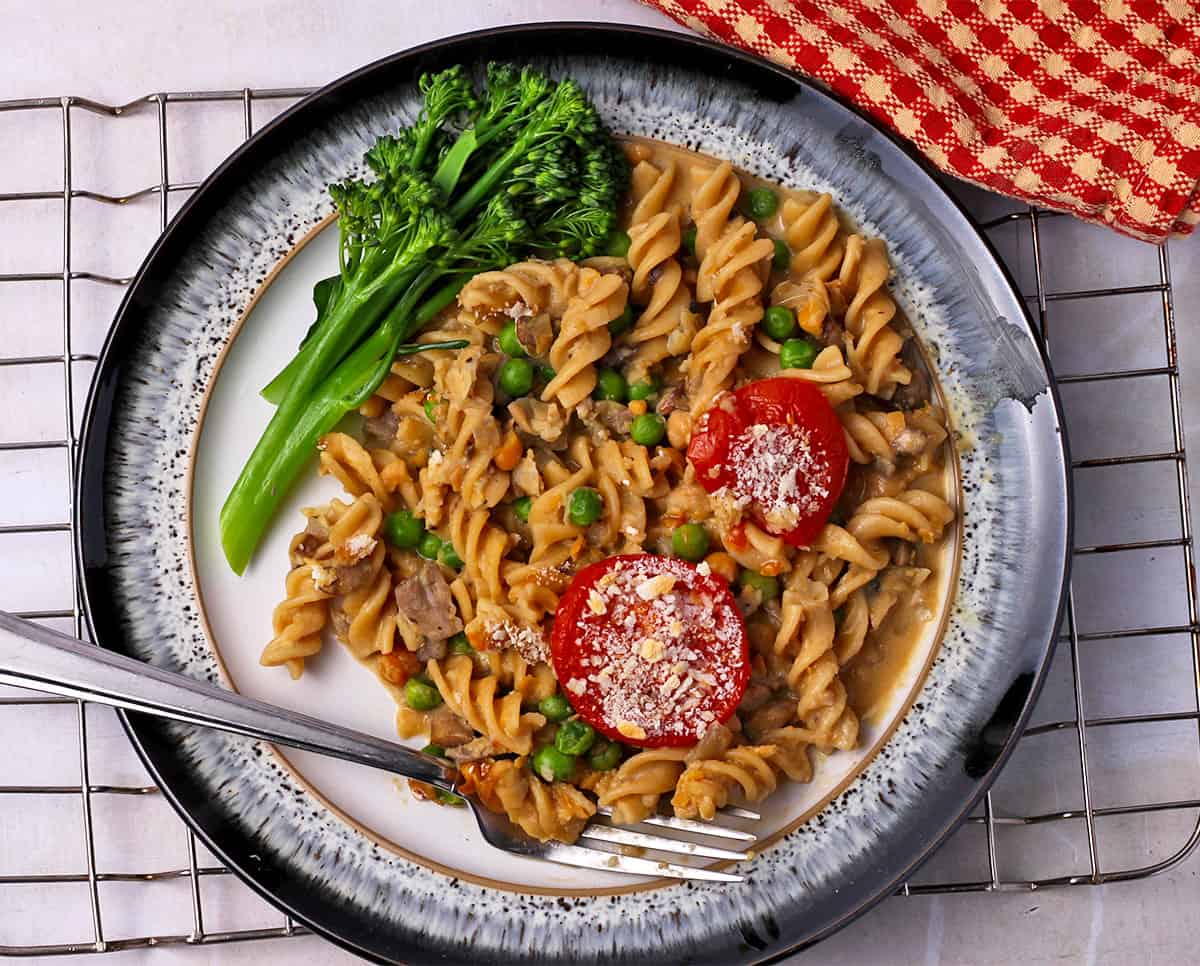
If you're a fan of vegan tuna and love creamy vegan pasta casseroles, grab the best of both with this comforting and nutritious casserole.
Table of Contents
⭐ Why You'll Love This Recipe
- This a straightforward recipe using simple ingredients that goes beyond traditional tuna casserole to celebrate wholesome foods that make you feel as good as they taste.
- This is a creative recipe with a purpose – delicious satisfaction without using vegan butter, prepared cream of mushroom soup, cashews, or vegan cheese.
- Meal prep parts or most of this casserole days ahead so it can be popped in the oven for a fuss-free weeknight family favorite.
📋 Ingredients, Notes, and Substitutions
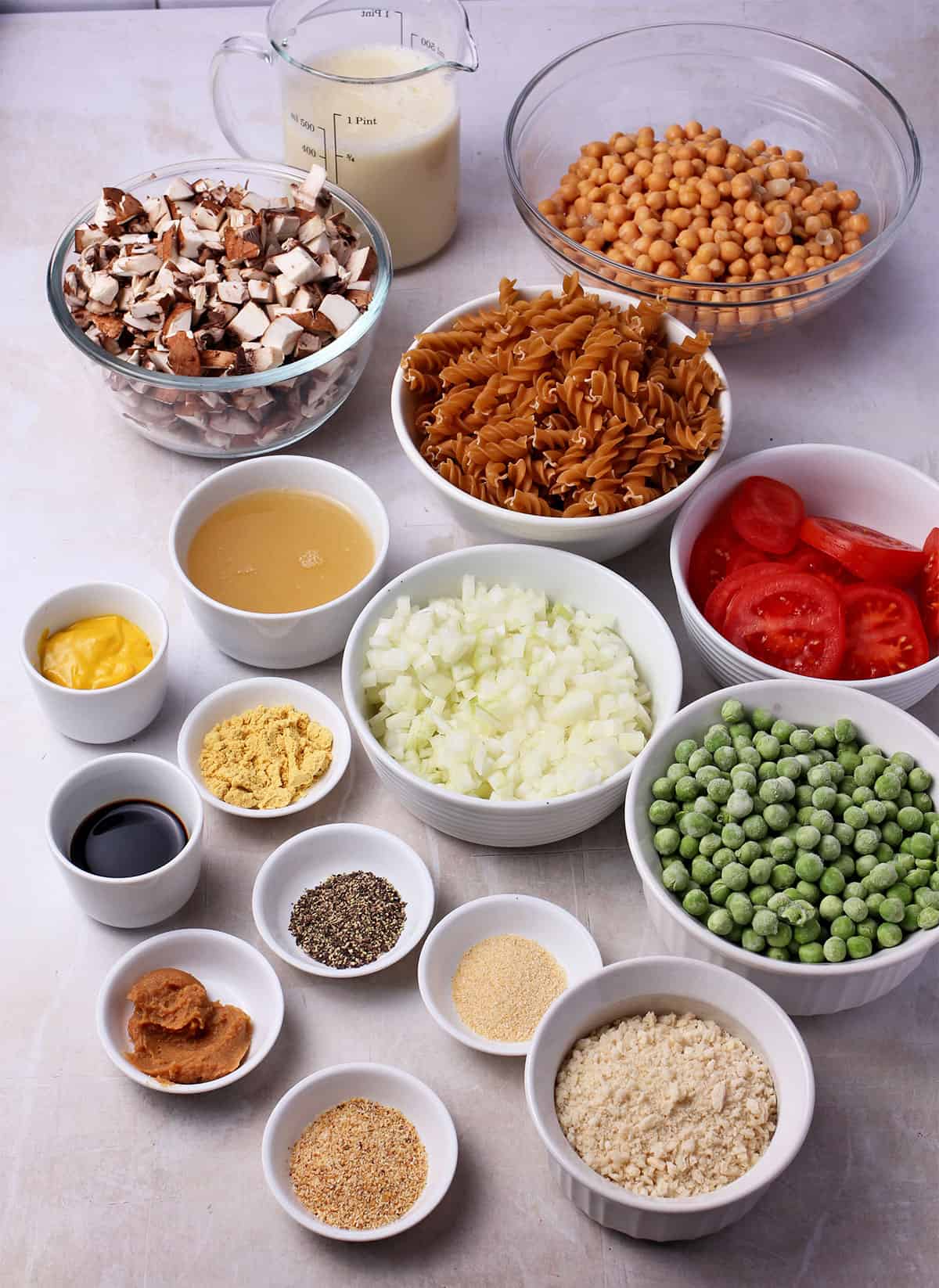
Chickpeas. Chickpeas or garbanzo beans add protein and a mock tuna texture when mashed. For this recipe, we’ll use the aquafaba, the juice from a can of chickpeas, to help thicken the sauce.
Miso paste. We love using miso paste for the slightly sweet, distinctive umami flavor that shouldn’t be missed.
Mushrooms. You don’t need to get fancy; choose a box of chestnut or white button mushrooms. I find it easiest to chop them, but if they are small, slice them if you like.
Panko breadcrumbs. Finding panko in a whole wheat version can be challenging, so use whole wheat or gluten-free breadcrumbs. You can also go old school with crushed potato chips. This is for the topping and is optional.
Mustard powder. Every cook should have a jar or can of mustard power in their cupboard. It's the secret to making creamy sauces with a little cheesy flavor. It is one of my favorite substitutes for nutritional yeast.
Pasta. Small pasta with texture holds the sauce the best, but you can use any pasta of choice, including gluten-free pasta. If you want a vegan tuna noodle casserole, select vegan noodles. Egg noodles are not vegan, but there are a few varieties available. A long noodle may be challenging to maneuver when eating, so break them before cooking.
Plant-milk. Any non-dairy milk works here, including oat or unsweetened almond milk.
Frozen peas. Green peas are a tuna casserole classic, but you can also use frozen green beans as long as they are in small pieces. If all you have are a mix of frozen peas and carrots, they are a great option too.
Please see the recipe card at the bottom of this post for the complete list of ingredients with measurements plus recipe instructions.
How to add seafood flavor to plant-based tuna
Various sea vegetables can add fishy flavor to vegan recipes, including kelp powder, dulse flakes, or ground nori sheets. Other options include diced capers, hearts of palm, or artichoke hearts.
Adding any of these ingredients is entirely optional. I recommend ½ a teaspoon of ground nori or kelp powder to start, then adjust as your taste.
🔪 Step-by-Step Instructions
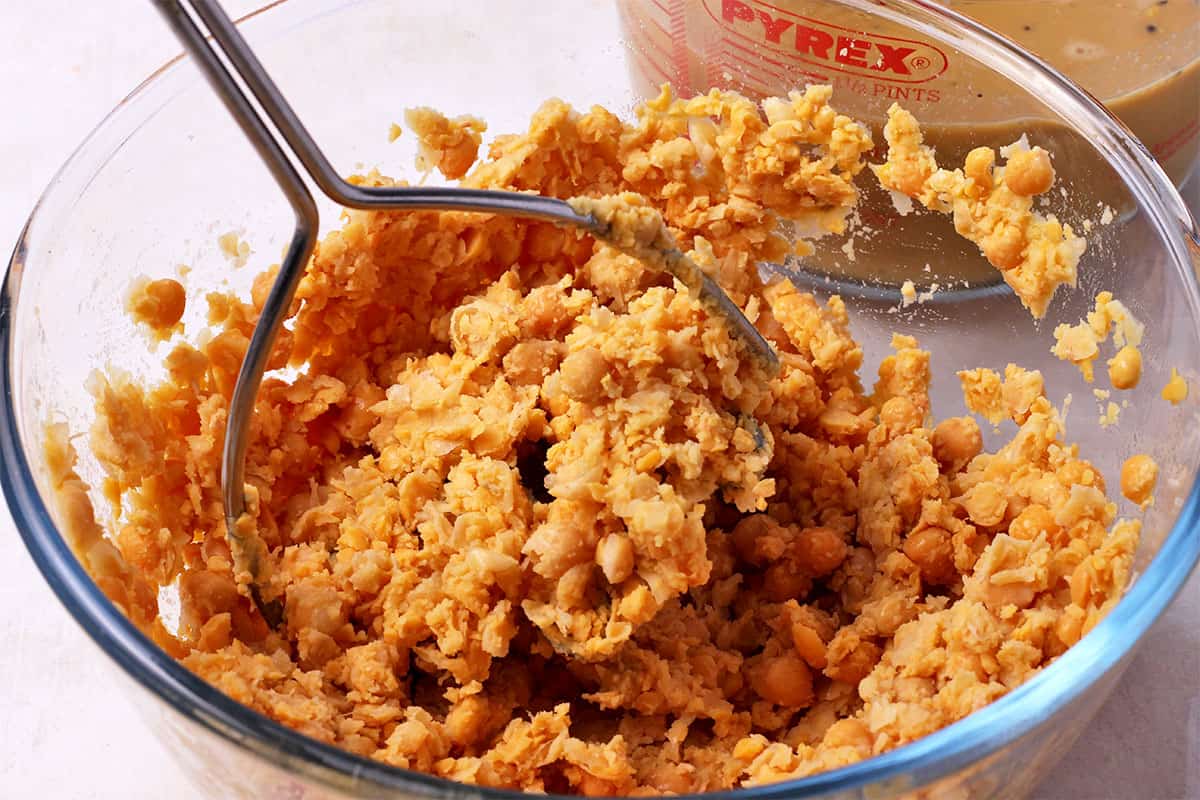
Step 1: Add drained chickpeas to a large bowl and crush them using a potato masher or fork.
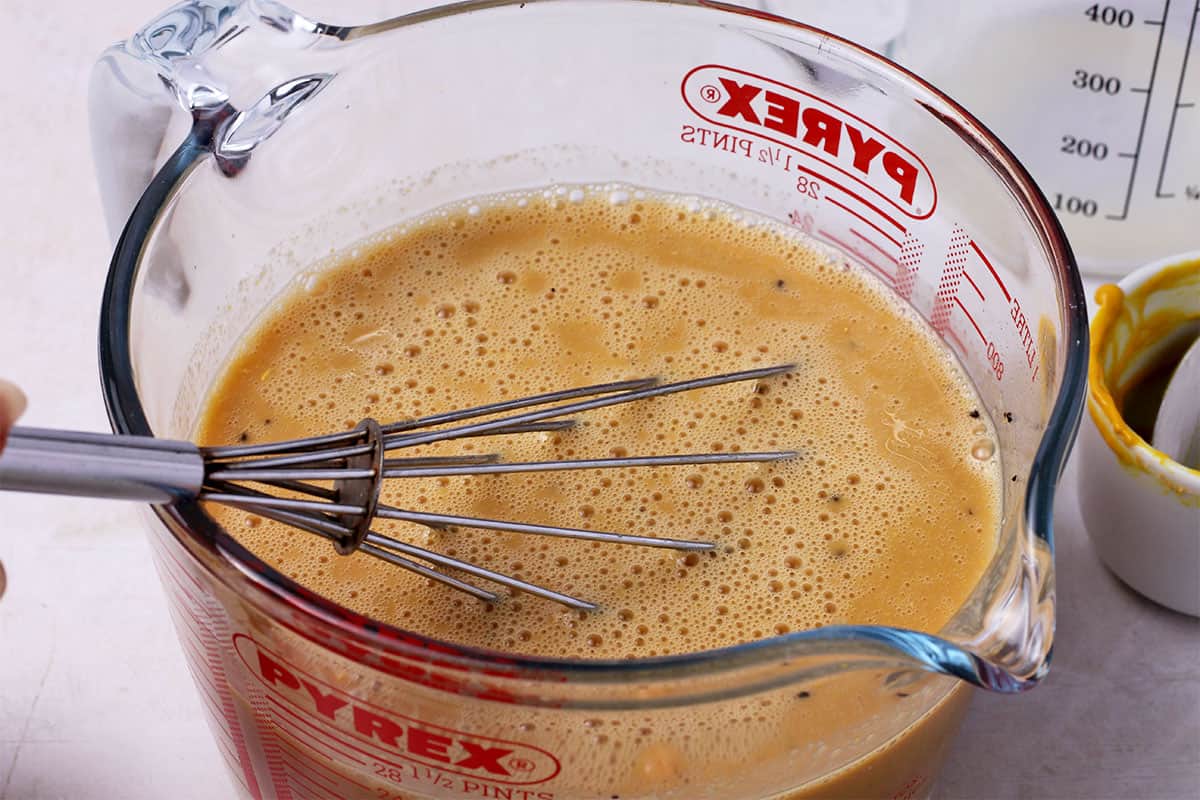
Step 2: Make the sauce in a small bowl by combining the plant milk, aquafaba, prepared mustard, miso paste, spices, soy sauce, and ground nori (if using).
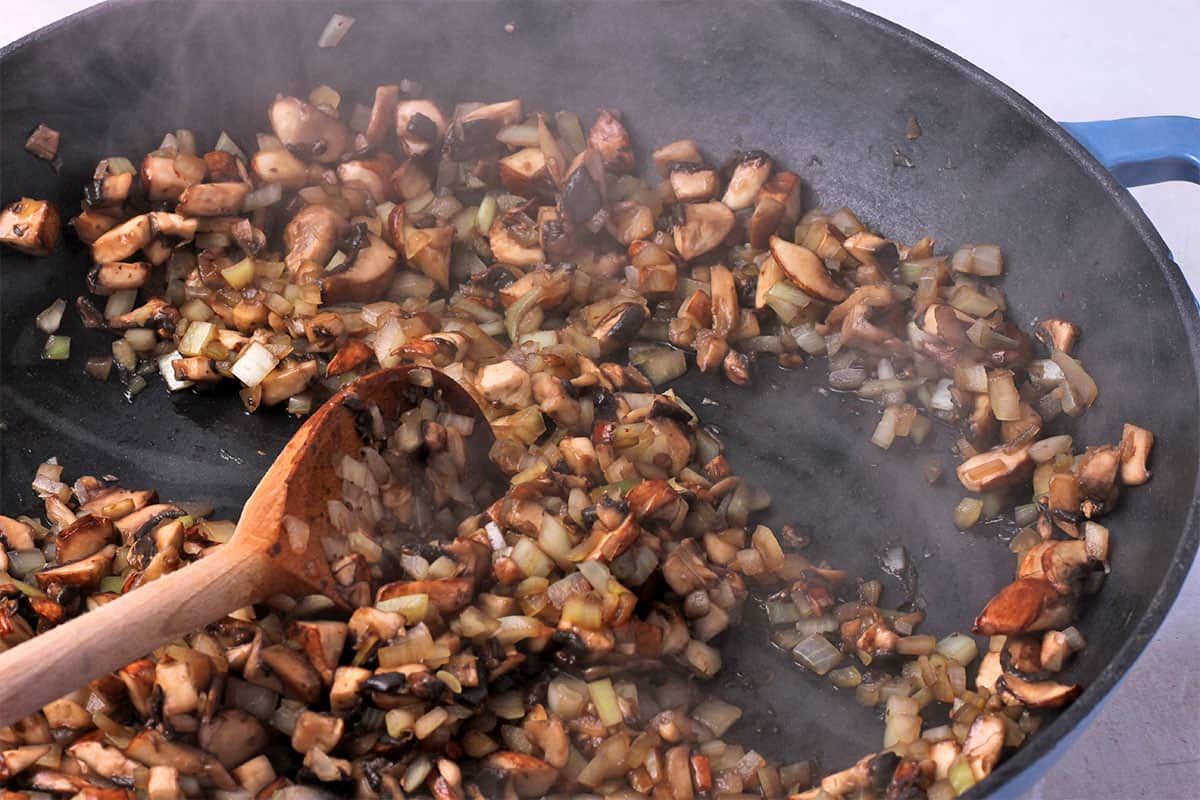
Step 3: Start the pasta and heat a large skillet over medium heat. Cook the onions, then add the mushrooms.
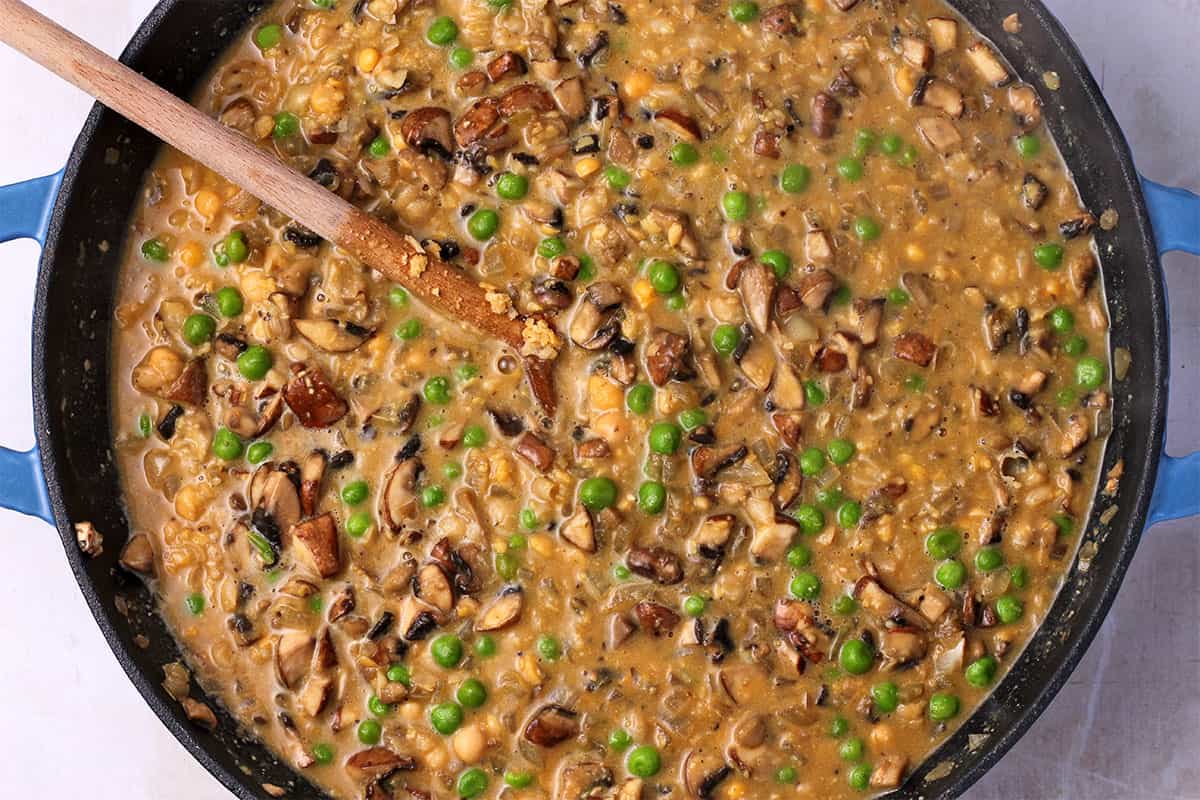
Step 4: Add garlic, frozen peas, sauce, and chickpeas. Let it simmer for a few minutes to thicken the sauce.
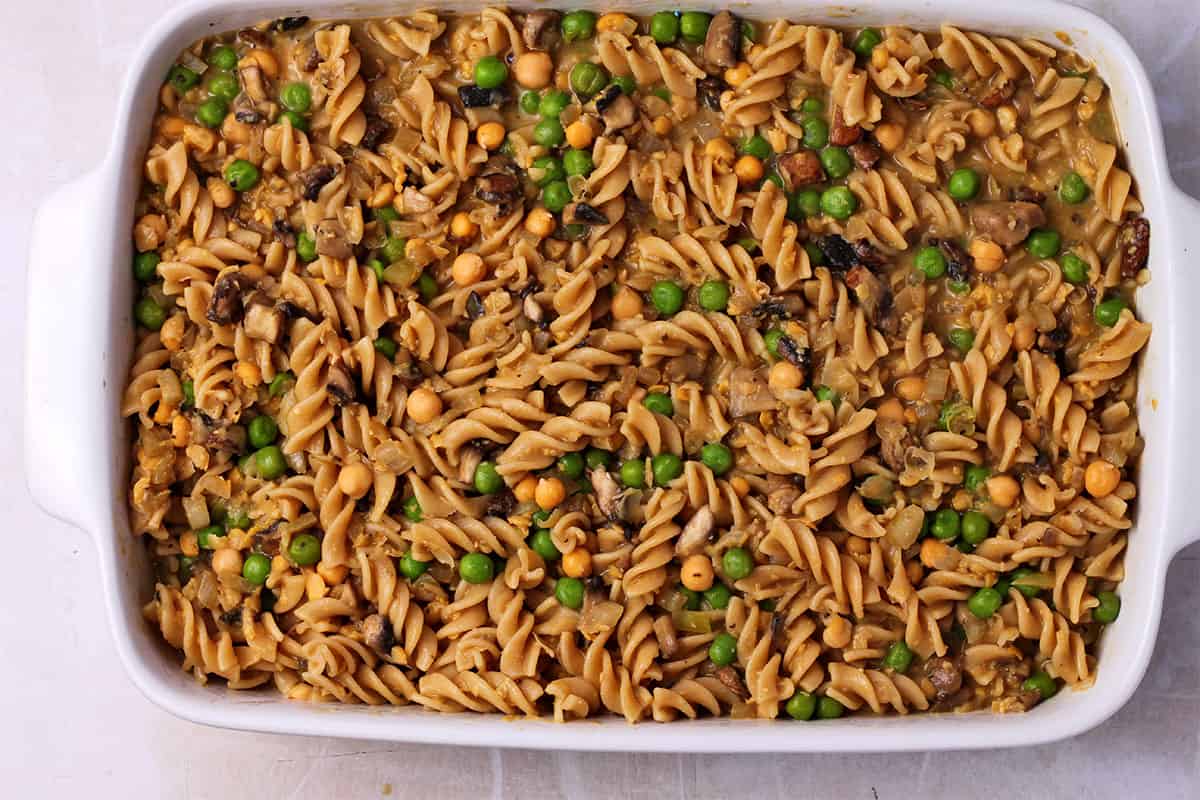
Step 5: Preheat the oven to 400 degrees f (200 c). Mix in the cooked pasta or add it to a casserole dish with the sauce and mix well.

Step 6: Add sliced tomatoes and sprinkle the breadcrumbs over the top of the casserole. Bake, uncovered, for 30-35 minutes.
💭 Pro Tips
- Cook the pasta al dente which means not mushy. Please consult the package directions to determine how long you'll need, but test by tasting it as it cooks.
- Taste the sauce before adding the pasta, and adjust the black pepper or other spices. Although soy sauce (or gluten-free tamari) is added, you should include a pinch of salt.
- Add the sauce and then the pasta to test the amount depending on how saucy you want. Some of the sauce will reduce as the casserole bakes.
- Assemble the entire casserole beforehand, adding the tomatoes and breadcrumbs before baking.
🌡️ Storage / Freezing / Reheating
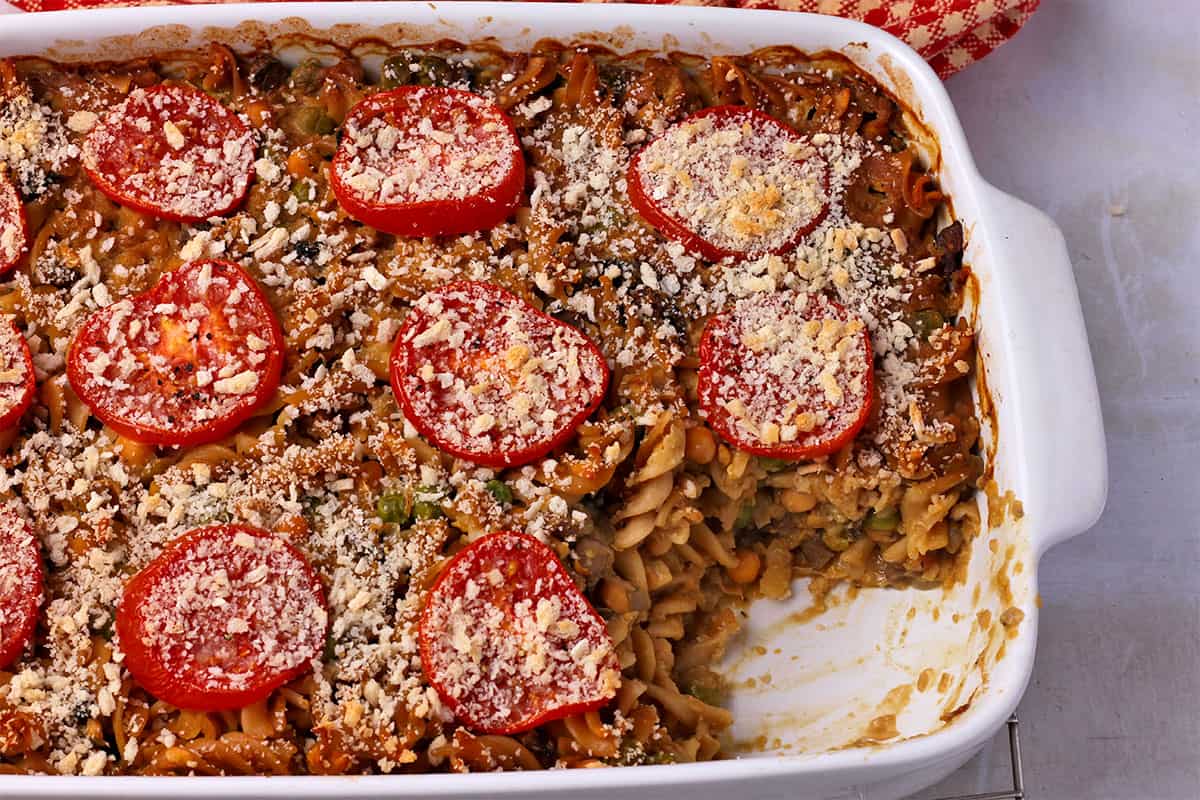
Store
Store the leftover casserole in an airtight container. Cover it in the original casserole dish or a small one if you need room in the fridge. It keeps well for 4 days.
Reheat
Reheat the casserole to 400 degrees f. It's best to cover it with foil for the first 20-30 minutes and then remove the covering for the last 10 minutes. If you have them, add a few extra breadcrumbs for the last few minutes so they can toast.
Freeze
You can freeze this casserole in large or smaller dishes. If you are freezing it from scratch, bake for 35 minutes until it has started defrosting and warming, then add the sliced tomatoes and breadcrumbs. If baking from frozen, set the oven temperature to 350 degrees f for the first 30 minutes and then adjust the temperature to 400 for another 10-15 minutes until the casserole is hot throughout.
💬 Frequently Asked Questions
Tuna casserole can be paired with various sides, such as a green salad with a light dressing. Roasted or steamed vegetables like broccoli, asparagus, carrots, or cauliflower also balance out the rich flavors of the casserole. Other tasty sides include garlic bread or warm bread rolls.
Dry tuna casserole usually results from adding too much pasta for the amount of sauce. The second reason is overcooking. Add the pasta to the sauce so you can ensure there's plenty of it. Nut-based sauces, especially those made with cashews, can cease causing the casserole to become too dry.
You'll need three ingredient adjustments to make this casserole gluten-free. First, replace the soy sauce with tamari or amino acids. Next, use gluten-free breadcrumbs. And finally, use clearly labeled gluten-free pasta.
📖 More Chickpeas Recipes
Do you have a question or recipe request or need a cooking tip? Leave a comment below or contact Denise. I’m here to help! If you want more healthy vegan recipes, please subscribe to my newsletter or follow me on Facebook or Pinterest for the latest updates.
If you make this recipe, please leave a ⭐⭐⭐⭐⭐ rating. It’s much appreciated!
👩🏻🍳 Recipe
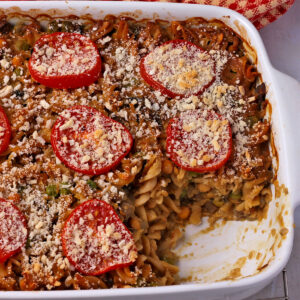
Vegan Tuna Casserole
Rate this Recipe:
Ingredients
- 3 cups chickpeas (garbanzo beans) - 2 cans, drained, reserve 1 cup of liquid
- 1 cup aquafaba - chickpea liquid
- 2 ½ cups plant milk
- 2 tablespoons soy sauce
- 1 teaspoon onion powder
- 2 teaspoons garlic powder
- 2 tablespoons prepared mustard
- 2 teaspoons mustard powder
- ½ teaspoon ground black pepper
- 2 teaspoons miso paste
- 1 teaspoon ground nori or kelp flakes - optional
- 12 ounces dry pasta - 3 cups
- 1 large onion - chopped, 2 cups
- 10 ounces mushrooms - chopped, 3 cups
- 2 cloves garlic - minced or pressed
- 2 cups frozen green peas
- 2 medium tomatoes - thinly sliced
- ½ cup panko - or breadcrumbs
Instructions
- After draining the chickpeas and reserving 1 cup of the liquid, pour them into a large bowl and crush them using a fork or potato masher.
- Next, start the water while you make the sauce.
- Combine the plant milk, aquafaba, soy sauce, mustard, mustard powder, onion and garlic powder, black pepper, and miso paste in another medium bowl or large measuring dish.
- Cook the paste if the water is ready, keeping an eye on it to ensure it’s not overcooked. When it’s done, drain it. Don’t worry if it cools; this goes in the oven.
- Heat a large skillet or Dutch oven over medium heat and add the onions. Cook for 2-3 minutes to soften them before adding the mushrooms.
- Cook the mushrooms until they release their natural moisture (about 3 minutes).
- Stir in the garlic and add frozen peas, reserved sauce, and chickpeas. Stir to mix and let the casserole filling simmer for a few minutes until it thickens. Add the pasta if you have room. If not, mix it in the casserole dish.
- Preheat the oven to 400 degrees F (200 C).
- Transfer the filling and pasta to a large casserole dish. Add tomato slices over the top and sprinkle with breadcrumbs. Mix the ingredients and level the top so it's relatively flat.
- Bake, uncovered for 30-35 minutes.
- Remove the casserole, and let it settle for 5 minutes before serving.
Video
Notes
- Various sea vegetables can be used to add fishy to vegan recipes, including kelp powder, dulse flakes, or ground nori sheets. Start with ½ a teaspoon and adjust after tasting. You can also add a tablespoon of chopped capers.
- To make this recipe gluten-free, replace soy sauce with tamari or amino acids and use gluten-free breadcrumbs and pasta.
- If you don't have frozen peas, you can substitute with frozen green beans or a peas and carrots mix.
- If the sauce is too thin for your liking, mix 2 teaspoons of cornstarch with ¼ cup of water and then add it to the sauce. This will thicken it as it simmers.
Nutrition
Nutritional information is an estimation only.


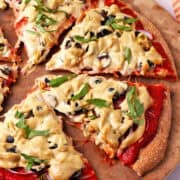
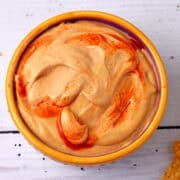
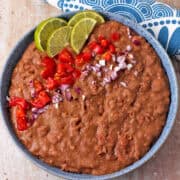
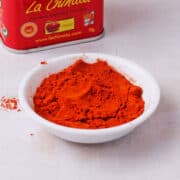
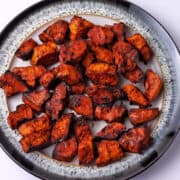
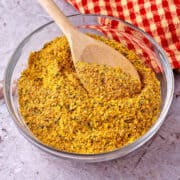
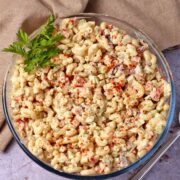
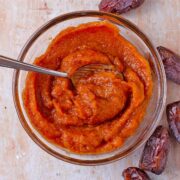
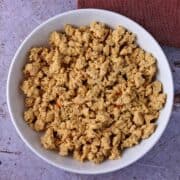
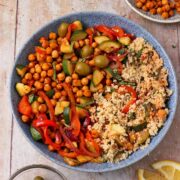
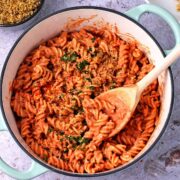
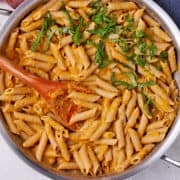
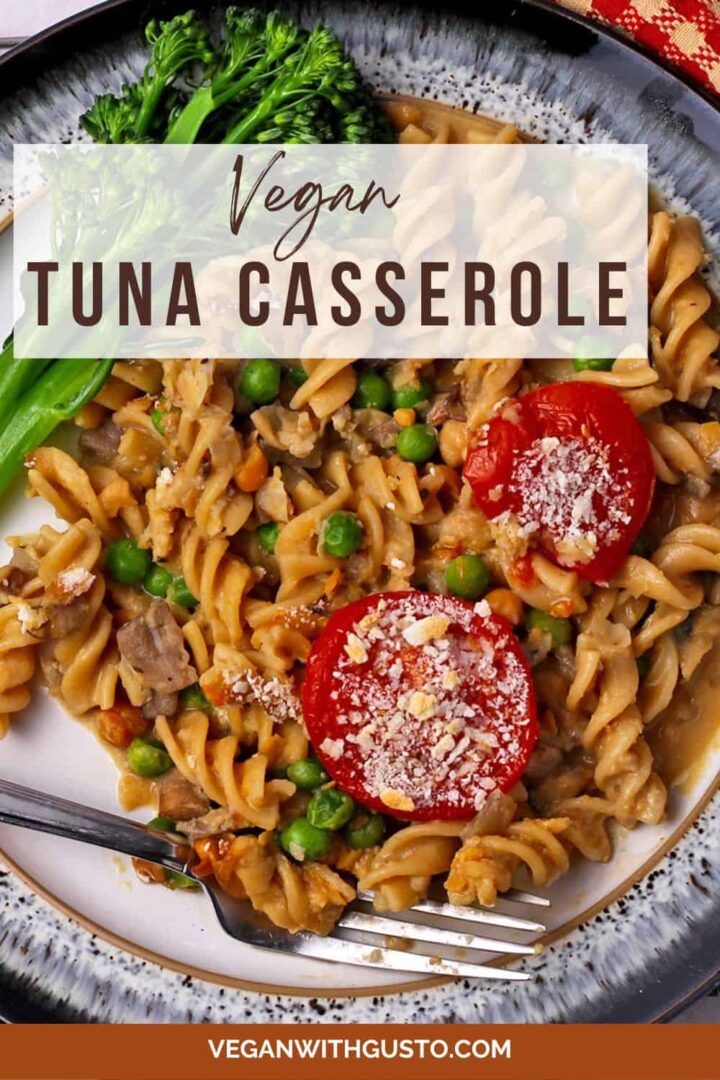
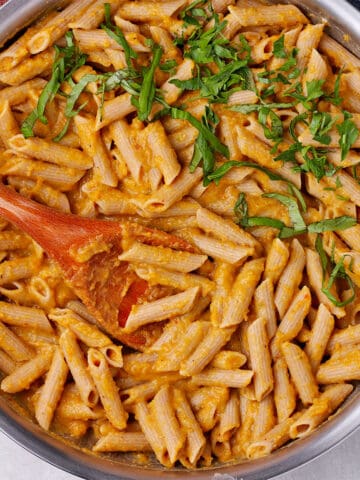
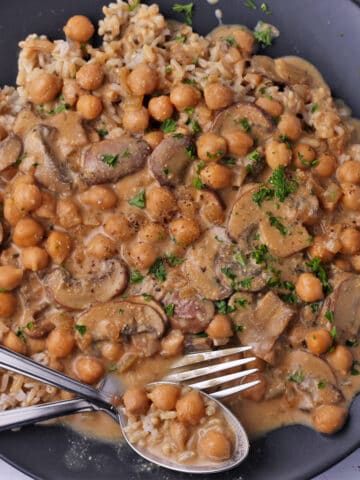
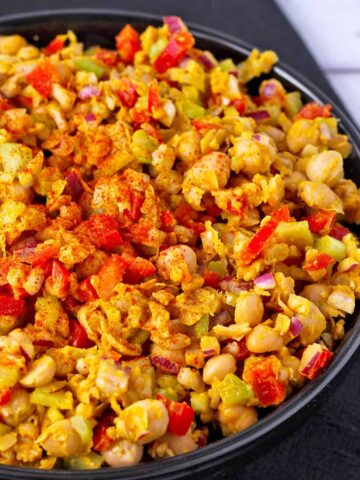
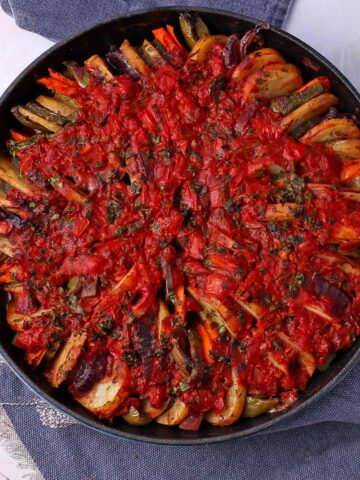
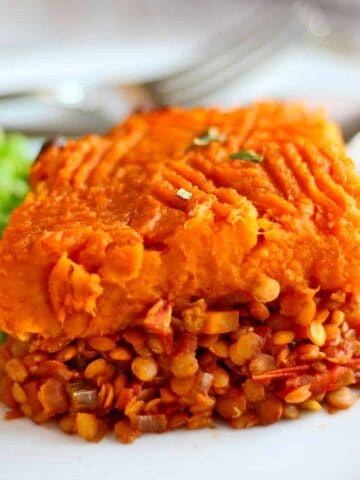
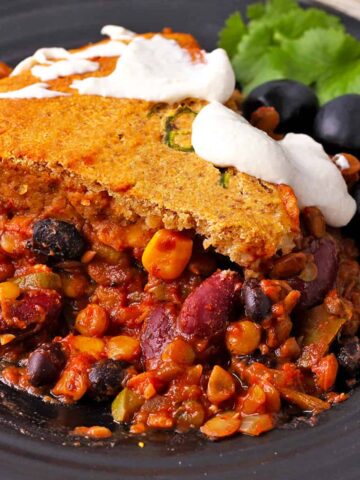
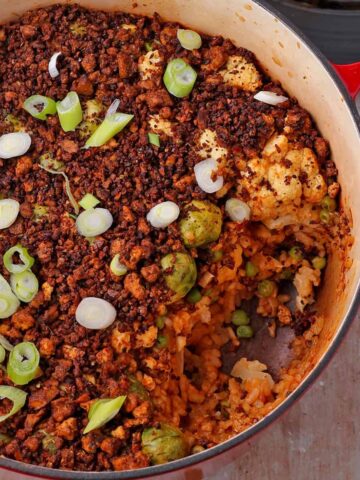
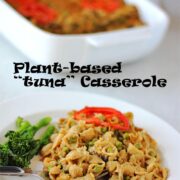
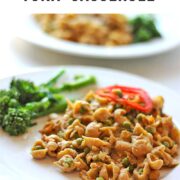
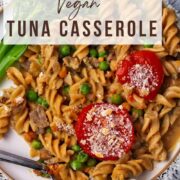
Leave a Reply